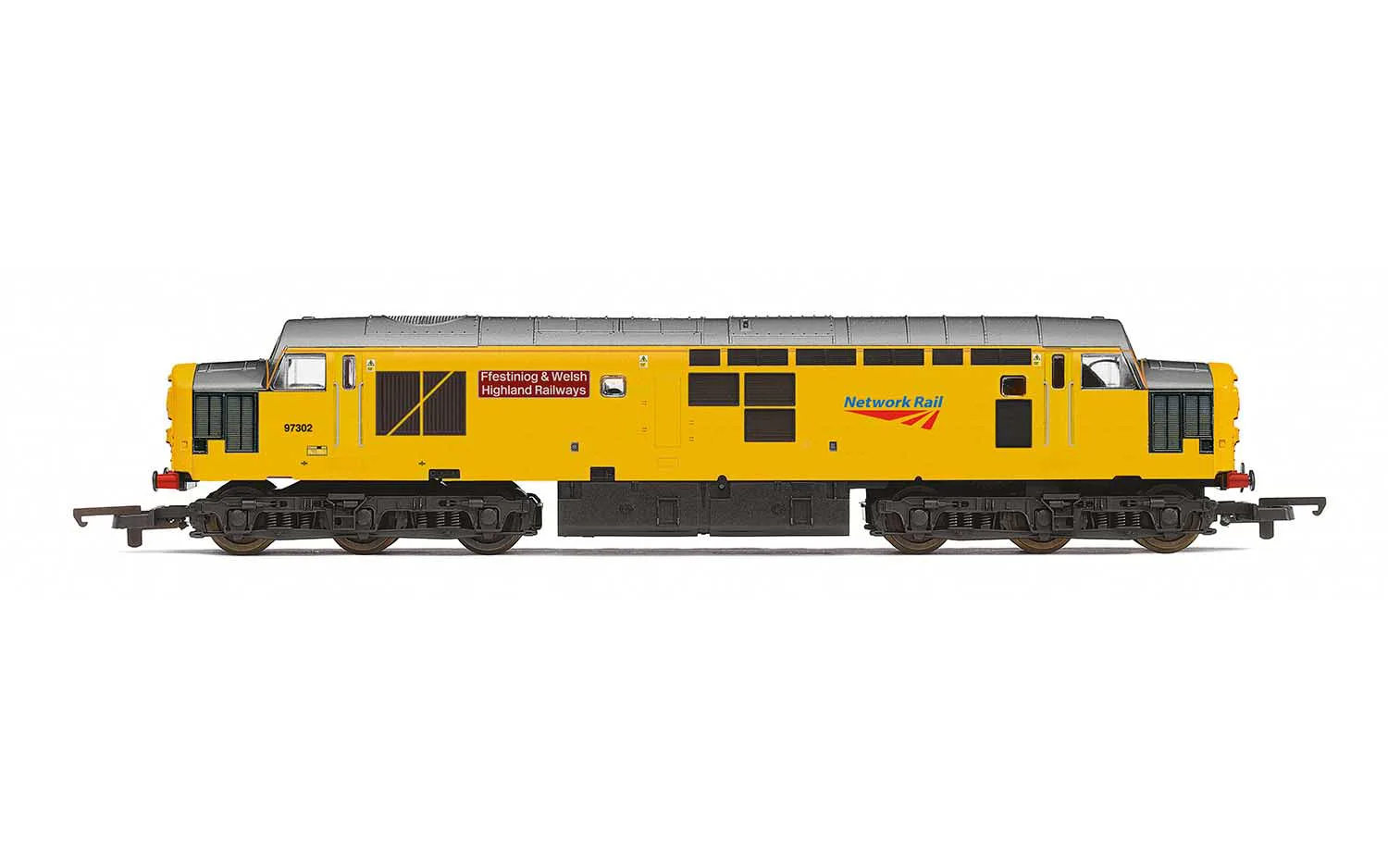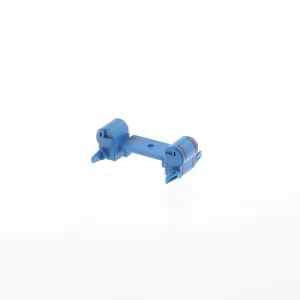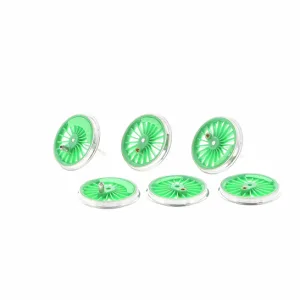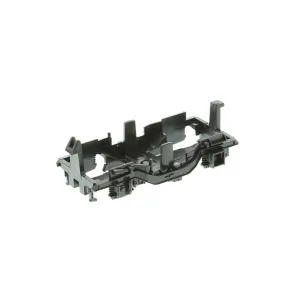Network Rail, Class 37, Co-Co, 97302 ‘Ffestiniog & Welsh Highland Railways’ – Era 11
Entering service as the English Electric Type 3, the British Rail Class 37 diesel locomotives were built at the Vulcan Foundry in Newton-le-Willows in a Co-Co configuration, based on locomotive designs for export markets. Built to undertake both freight and passenger work across all BR sectors, these engines proved highly reliable and, after overhaul, many survived in service across the network into the 1990s.
British Rail first placed an order for forty-two Class 37 locomotives in January 1959, the first of which was delivered in November 1960, entering service on 2 December with the last of this original batch complete by mid-1962, by which time subsequent orders had been placed. The last of the 309 locomotives built was delivered to the Western Region on 9 November 1965, originally numbered in the range D6700-D6999 and D6600-D6608.
Many Class 37 Locomotives were refurbished in the 1980s, extending their life. As a result, the Class 37 remains in service to this day as one of the longest serving classes on British railways. Second-hand locomotives have been exported to railways in France and Spain whilst in the UK many locomotives no longer required to work have been preserved.
Network Rail possesses 5 Class 37 locomotives. One of these, No. 37217, is in storage whilst the other four have undergone extensive refurbishment. The refurbished locomotives have been reclassified Class 97/3, with the Class 97 designation reserved for departmental locomotives under the TOPS system. These four were used by Network rail as part of the European Rail Traffic Management System (ERTMS) trial project on the Cambrian Line. The class was chosen because of its original fitment with both air and vacuum braking, a feature which will allow them to pull both modern freight trains as well as steam specials.





